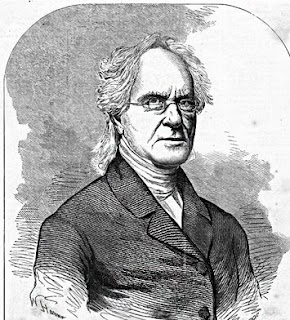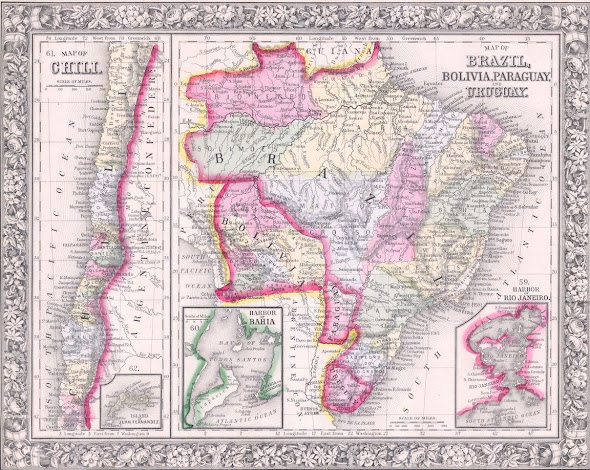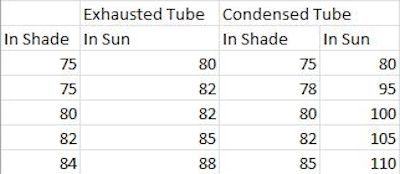Coal Gas--The Original Gaslighting
Coal Gas--The Original Gaslighting
Coal gas--later called town
gas-- is produced by burning crushed lumps of coal in an oxygen starved
atmosphere to produce methane and hydrogen, both of which burned brightly, as
well as small amounts of nonflammable but poisonous gases such as carbon
monoxide, carbon dioxide and nitrogen.
Peale's museum was so
successful in lighting for night time exhibits a consortium of financiers
including Peale formed the Baltimore Gas company to illuminate the city's
streets and, ultimately sell gas to private homes.
Over the following years most urban centers set up town gas plants and laid thousands of miles of
gas lines to both light the streets and some wealthy homes. It would not be until 1882 that Thomas Edison would provide electric power to homes and offices (in NY City, near Wall Street to impress investors.)
Gas lighting and heating
had a tremendous impact on society and manufacturing businesses could now run
plants at night. Workers on 12 hour shifts kept textile mills and iron smelting
plants going day and night. Steam powered machinery could now be run around the
clock.
Running
machinery constantly required much more oil to keep parts
lubricated. Whale oil was ideal for this task so the creatures were
hunted to near extinction while the cost of whale oil rose beyond the means of
the average family.
The stereotype of slaves
mostly picking cotton in the fields or serving ham and grits to the white
masters in the "Big House," is false. A better description is
"any hard, and dangerous job was handled by slave labor."
Municipal gas companies
bring about a look at one of the other widespread uses of enslaved people--coal
mining and working in gas factories.
A town located near a
deposit of coal was considered a great location. Transporting coal over a
short distance to a gas plant was inexpensive.
Coal was mined by slaves
under white supervision. Local slave owners were happy to rent out their
slaves to local gas companies or coal mines. Cotton yields were poor by
this time in the Southeast, so renting out their excess labor was
economically more attractive than selling their slaves to new plantations in
Alabama or Mississippi. Owners suffered no loss if a slave were
killed or badly maimed in a mining accident--the coal company had insured
them.
Plus,
if a slave survived several years as a miner, the coal company paid the owner even
more per year because the slave was now considered experienced labor.
If the mines had all the
labor they needed, a slave owner could rent his slaves to the gas company
itself. Men in bricked underground vaults shoveled coal into the low
oxygen furnaces 12 hours a day to mass produce gas.
There was only one aspect
of gas companies that gave upper class whites in the South concern.
Running the gas plant
itself, controlling the distribution, and repairing or replacing equipment
required literate skilled labor. It required White labor from the North.
The spectacle of well-paid
White labor in front of Southern poor Whites was a social danger.
Farming, storekeeping along with professional jobs such as lawyers or
doctors were the only jobs besides slave catching socially considered
respectable work for White men. In the South, common labor was
strictly the providence of slavery.
Gas in DC
May 29, 1857
ABOUT GAS—The Washington Gas Company in manufacture of gas
for the use of this city and Georgetown, consume an average of 30 tons of coal
daily. This gives an average of 210 tons per week. Each ton of coal produces
about 20,000 cubic feet of gas, which in one day’s manufacture, amounts to 600,000
cubic feet. The amount per week is, according to this, 4,200,000 cubic feet which
is consumed as fast as made. The number of men employed by the company is 38,
and they receive from $1.00 to $1.75 per diem for their labor. The cost in
material and manufacture per week amounts to at least $1,800, and is probably
more than that: perhaps $2,000 to $2,500 per week.
The company receive nearly all the coal used in the manufacture
of gas from Port Walthall, Virginia. This is considered the best gas for the
purpose of making gas. The English bituminous coal which is partly used by the
company, is preferred to the native coal. One pound of English coal will
produce five cubic feet of gas, while the amount f Port Walthall material will
produce on three and a half cubic feet. The quality of the gas from the former
is also considered superior to that obtained from native coal.
London, England August 24, 1860
NEW GAS IN LONDON—It is stated in late London papers that
the new “line light gas,” which was promised to supersede the present mode of
gas lighting, has been tried on the bridge at Westminster, and with great
success. The light is of dazzling brilliancy,
a single jet being equal to forty argand, or eighty fish tail gas burners, or
as many as 400 wax candles, whilst its brilliance may be increased by augmenting
the quantity of gases supplied in its manufacture. It was understood, when the
invention was first discovered, that the gas would be cheaper than that now in
use, but at present the only thing stated of it is, that it is immensely superior
to the ordinary form of gas light.
June 15, 1852 NY Times page 1
Gas lamps to be installed Along with Oil Lamps
The Board of Assistants has approved:
Resolution adopted—To have Broadway from forty-sec0nd street
to fifty-ninth, lighted with gas.
Resolutions Adopted—That the pump on Cherry Street near
Clinton-street, be repaired; that Duane-street from Broadway to Centre-street,
be lighted with gas…..that the Commissioner of Lamps report why the lamp-posts
are not set in One-Hundred and Twenty-second -street; that Forty-ninth-street,
from Eight to Ninth-avenues, be regulated in accordance with the new grade; ;Forty-sixth-street
from the Tenth-avenue to the Hudson River, be lighted with oil; That Tenth-avenue
from Forty-second to Forty-eighth-streets, be lighted with oil…
Coal Gas Competition May 26, 1866 NYT page 5
GAS FROM PETROLEUM—A Company has been formed in this City
for the purpose of supplying the public with gas for lighting and heating purposes
manufactured from crude petroleum. It is claimed that the gas has nearly three
times as much illuminating power as coal gas, that it is entirely free from
odor, and can be supplied for 40%, less than coal gas at present prices. The
company have purchased all the patents for manufacturing gas from petroleum,
and they propose to commence operations so soon as the necessary capital, $3,000,000,
is raised.
They have a grant from the Corporation to lay pipes and
mains in all the streets, avenues, lanes and public parks within the City
limits. Within a few weeks the public will probably be afforded an opportunity
of judging of the difference in illuminating power between petroleum and coal
gas.









Comments
Post a Comment